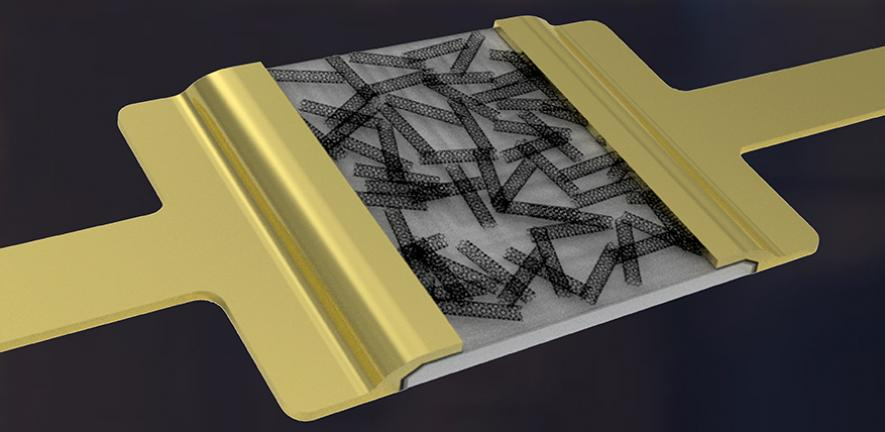Oct 14 2020
Electronics that use small amounts of power are crucial for the progress of the Internet of Things, where real-world objects are linked to the internet. A number of upcoming technologies, ranging from healthcare devices to wearables to smart cities and smart homes, require economical transistors and electronic circuits that can work with reduced energy use.
 Artist’s impression of a hybrid-nanodielectric-based printed-CNT transistor. Image Credit: Luis Portilla.
Artist’s impression of a hybrid-nanodielectric-based printed-CNT transistor. Image Credit: Luis Portilla.
Printed electronics are a simple and cost-effective way to make electronics that could facilitate the advent of economical electronic devices on novel substrates— such as plastic wrap, clothes, or paper— and provide ordinary objects with “intelligence.”
But to be beneficial for everyday applications, these devices need to run on low energy and power consumption. There has been considerable advancement in printing methods, but power consumption is still a challenge—the various solutions that exist are too difficult for commercial production.
At present, scientists from Soochow University (China), in collaboration with partners from other research institutions in China, UK, and Saudi Arabia, have devised a method for printed electronics that could be employed to build economical devices that can be recharged out of thin air.
The devices could even be powered by the ambient radio signals that are everywhere. Their results have been published in the ACS Nano journal.
Since the commercial batteries that drive a number of devices have narrow lifetimes and negative environmental influences, the scientists are creating electronics that can work autonomously using ultra-low levels of energy.
The technology created by the team provides high-performance electronic circuits based on thin-film transistors, which are “ambipolar” as they employ only a single semiconducting material to convey both positive and negative electric charges in their channels, in an area of operation known as “deep subthreshold”—a phrase that typically means that the transistors are made to work in an area that is generally considered to be their “off” state.
The team came up with the phrase “deep-subthreshold ambipolar” to refer to unparalleled ultra-low operating voltages and levels of power consumption.
According to the team, if electronic circuits composed of these devices were to be driven by a basic AA battery, it would be feasible for them to run non-stop for millions of years.
The team, including scientists from Soochow University, the Chinese Academy of Sciences, ShanghaiTech University, and King Abdullah University of Science and Technology (KAUST), used printed carbon nanotubes—ultra-thin cylinders of carbon—as an ambipolar semiconductor to attain the result.
Thanks to deep-subthreshold ambipolar approach, we created printed electronics that meet the power and voltage requirements of real-world applications, and opened up opportunities for remote sensing and ‘place-and-forget’ devices that can operate without batteries for their entire lifetime.
Luigi Occhipinti, Study Co-Author, Department of Engineering, Cambridge University
“Crucially, our ultra-low-power printed electronics are simple and cost-effective to manufacture and overcome long-standing hurdles in the field,” added Occhipinti.
Our approach to printed electronics could be scaled up to make inexpensive battery-less devices that could harvest energy from the environment, such as sunlight or omnipresent ambient electromagnetic waves, like those created by our mobile phones and Wi-Fi stations.
Vincenzo Pecunia, Study Co-Lead Author and Professor, Soochow University
Pecunia is a former Ph.D. student and postdoctoral researcher at Cambridge’s Cavendish Laboratory.
The study opens the door to a new class of self-driven electronics for biomedical applications, infrastructure monitoring, smart homes, and the rapidly growing Internet of Things device ecosystem.
The study was financially supported in part by the Engineering and Physical Sciences Research Council (EPSRC).
Journal Reference:
Portilla, L., et al. (2020) Ambipolar Deep-Subthreshold Printed-Carbon-Nanotube Transistors for Ultralow-Voltage and Ultralow-Power Electronics. ACS Nano. doi.org/10.1021/acsnano.0c06619.